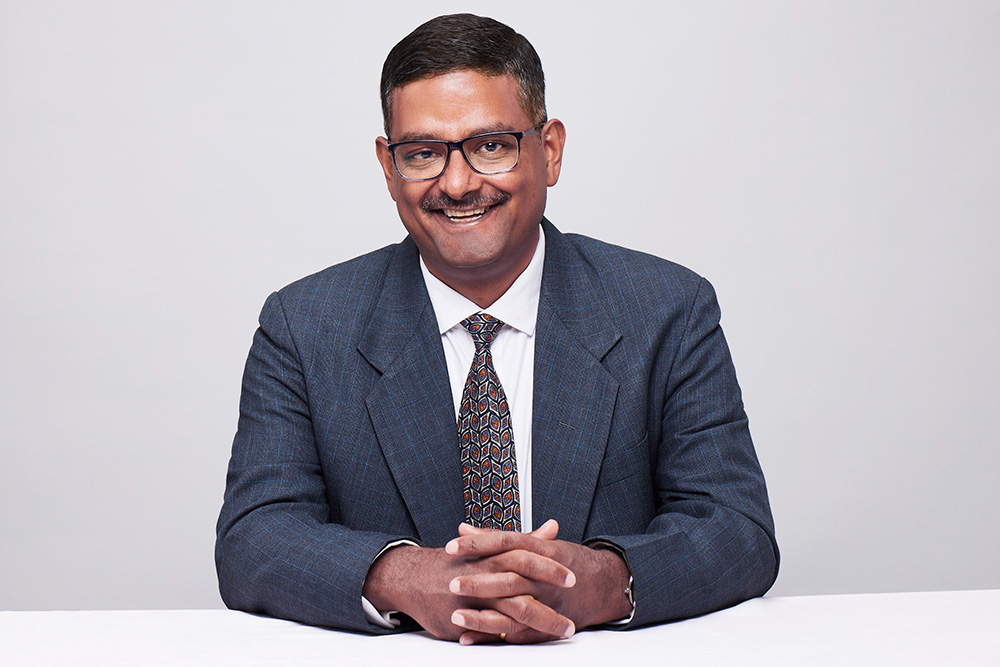MD & CEO of Mahindra Lifespace Developers Ltd, reckons that companies with better management, balance sheets, and governance are getting ahead of the competition in the real estate market
Digital technology and the demand for green buildings are propelling the real estate industry forward. Technology is used to facilitate a seamless buying experience for buyers, right from property discovery to post sales maintenance. The industry is also looking for innovative ways to use technology to reduce the environmental impact of the real estate sector by focusing on building sustainably.
Managing Director & Chief Executive Officer of Mahindra Lifespace Developers Ltd., Arvind Subramanian, describes digital transformation in real estate as the marriage of two extremes: the most traditional sector, brick and mortar – one of the oldest industries known to mankind – and the most modern set of developments surrounding digital technologies.
Subramanian believes that green housing is already the new trend in Indian real estate. He uses the example of India’s first net-zero energy residential building, which Mahindra Lifespace launched in Bangalore in 2022. “Nearly 90 percent of that phase was sold within five months, which indicates there is a latent demand for consumers to live in green developments,” stated Subramanian.
India’s real estate market is seeing a big increase in demand in 2022, and this is likely to keep going for the next few years. According to NITI Ayog, the Indian real estate sector is expected to grow to $1 trillion size by 2030, accounting for 18-20 per cent of of the country’s GDP. The sector is continuously evolving with novel solutions for residential, commercial, and retail applications, exhibiting a growth trajectory.
The real estate market in India has shown remarkable adaptability and resilience in response to buyers’ and end-users’ ever-changing needs. Sustainability, technological advancement, improved building standards, and proactive government regulations have become increasingly important.
At the The Economic Times Realty Convention Summit 2022, Arvind Subramanian talked about how the real estate landscape in the country looks, the emergence of technology, and the importance of sustainability in the sector. Excerpts from the interview:
How do you see the real estate market landscape in India?
In the last five to seven years, there has been a clear trend toward what I refer to as the “formulisation” of the sector. I prefer to use the term “formulisation” rather than “consolidation” because the term “consolidation” is often misunderstood to mean that large companies continue to grow while smaller ones fall by the wayside. The companies that are better managed, with better balance sheets and governance, are stealing a march on the competition.
Every city has a common trend of four or five players gaining a much larger market share than they had previously.
What is the impact of digital transformation on India’s expanding real estate sector?
It’s the marriage of two extremes: the most conventional sector, brick-and-mortar – one of the oldest industries known to mankind – and the most modern set of advances surrounding digital technologies. Through the use of digital technologies, we are witnessing much more effective customer engagement right through the sales process as well as through the process in which the customer is waiting for their apartment to be delivered.
But we are also seeing that digital technology is being used in the construction sector – to speed up construction, improve safety, improve quality, and finally, embed digital technology within the product itself. We are starting to see smart homes, smart buildings, all enabled through digital technology.
Why should the real estate sector prioritise sustainability?
Let me start with some startling numbers – the construction industry is responsible for one-third of the world’s total greenhouse gas emissions. The opportunity for India is that roughly 60 percent of the building stock required by 2040 still needs to be built. Therefore, we have a great chance to build well, because whatever we build will have to last for 50 years thereafter. So sustainable construction, green building are going to become not just preferences but almost the norm going forward.
At Mahindra Lifespaces, we launched India’s first net-zero energy residential building in Bangalore this year. It was heartening to see the response as consumers flocked to buy, we sold almost 90 percent of that phase within 5 months and that tells you that there is a latent demand that consumers are willing to live in green developments.



